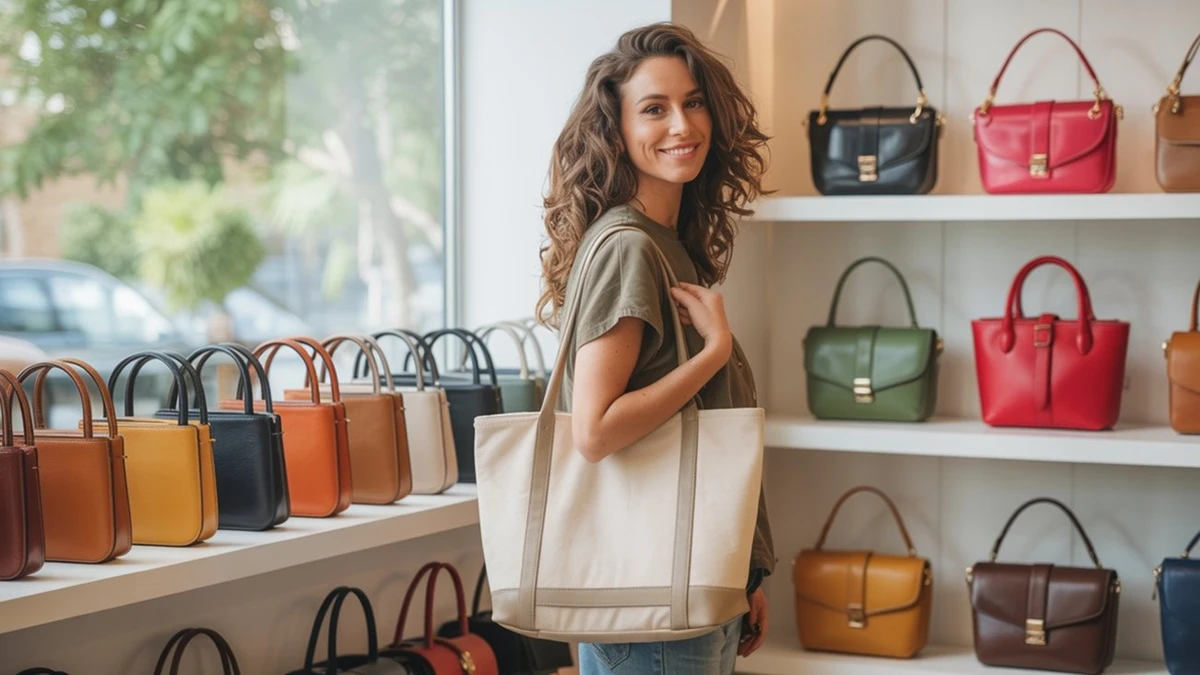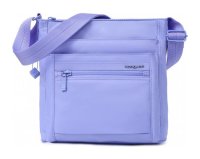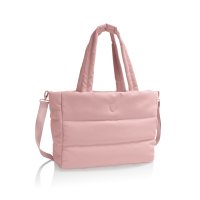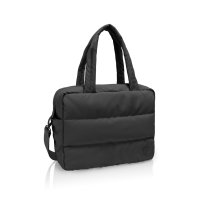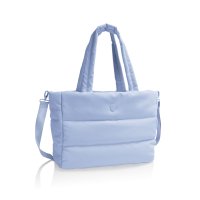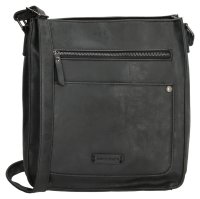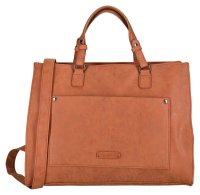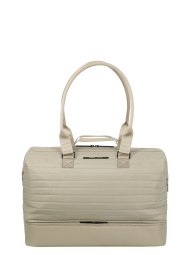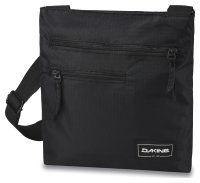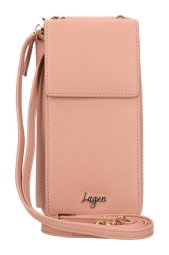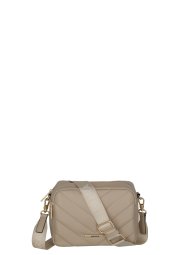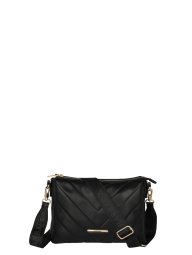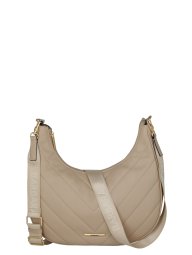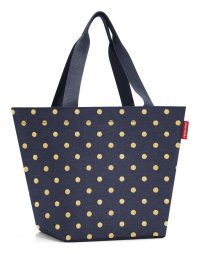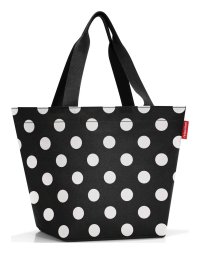A woman's handbag isn't just an ordinary bag for work and shopping. It's a faithful companion that keeps everything we need close at hand every day, and at the same time, a fashion accessory that highlights its owner's style, personality, and outfit. Logically, every woman has different demands for the function and appearance of her handbag, so choosing the right one isn't always straightforward. A safe bet is to have several models at home and, depending on the event you're heading to, always choose the most suitable one for the occasion.
For the chosen handbag to meet your requirements, it should not only be a practical companion but also a suitable addition to your wardrobe that enhances your look and boosts your confidence. The ideal handbag should be, to some extent, versatile, beautiful to look at, and practical on the inside. Furthermore, it should be made of high-quality material. The type and shape of the handbag play a significant role in the selection process, as they influence its functions. Whether you're looking for a timeless model for work or an elegant accessory for a party, we will teach you how to choose a women's handbag that will match your lifestyle, outfit, and needs.
Contents
- Women's Handbags – Basic Types
- Size, Internal Layout, and Functional Features
- Material
- Colour and Outfit Coordination
- Handbags by Occasion
- Most Popular Types of Women's Handbags
- The Most Common Mistakes When Choosing a Handbag
- Frequently Asked Questions
Basic Types of Women's Handbags
There is a wide variety of types and styles of women's handbags. They differ in shape, size, colour, internal layout, and how they are carried. Each type has its advantages, making it better suited for certain occasions. Choosing the right one that holds everything you need and matches your style can sometimes be challenging, so it's a good idea to get a basic overview of what to expect from each type:
- Crossbody bags: Practical, ideal for the city and leisure time. Thanks to the long, adjustable strap, they are worn close to the body, allowing you to have your hands free and providing better security.
- Sports Handbags: Casual, sporty-style bags made from durable materials are designed for everyday use, leisure, and various activities. However, they are not primarily intended for storing sports gear.
- Women's Shoulder Bags: Versatile women's bags with a shoulder strap are suitable for any occasion, offering comfort and ample storage space.
- Phone and Document Bags: Handy mini shoulder bags for your phone, card, or keys ensure easy access and are more practical than a wallet.
- Convertible Backpacks: The combination of elegance and practicality with flexibility is appreciated by women of all ages. Bags that can also be worn as a backpack are suitable for work, trips, and city outings.
Size, Internal Layout, and Functional Features
Choosing the right size of handbag is essential not only for functionality and style but also for comfortable carrying. There's nothing worse than having a handbag that can't even fit the essentials, or one that's so large you can't find anything in it quickly. You can easily choose the optimal size not just by dimensions, but primarily by its volume, which is most often stated in litres:
-
Small handbags (up to 5 litres) – ideal for keys, a mobile phone, and a wallet, suitable for a casual walk or an evening out.
-
Medium handbags (10–20 litres) – the most versatile options for everyday use, holding items for work and the whole day, including a tablet/laptop.
-
Large handbags (20–30 litres) – suitable for active women who have plans after work. They usually have a compartment for a laptop, documents, a cosmetic bag, an umbrella, a water bottle, and more.
- Extra-large handbags (over 30 litres) – the most spacious models that also consider comfort. They can carry shopping or sports gear and are suitable for mothers with children as well as for travel as a cabin bag.
The true functionality and practicality of a handbag lies within. The internal layout determines how quickly you can find your keys, how securely your phone and wallet are stored, and how organised you can keep your belongings. To always know your way around your handbag and save yourself from searching, it's good to focus on the following functional features and important details:
- Type of closure (zip, magnet, snap) – has a direct impact on the security of your items.
- Textile lining – contrasting colours make it easier to find things, and a durable material simplifies maintenance.
- Arrangement and number of internal and external pockets and compartments – for effective organisation.
- Padded compartment for a tablet or laptop – ensures safer transport of electronics.
- Length and adjustability of the detachable strap – increases flexibility and comfort when worn on the shoulder or across the body, adapts to different heights, and you'll appreciate the soft padding to prevent pressure marks during prolonged use.
- RFID protection – prevents data from being copied from the chips of payment cards and documents.
- Integrated key clip
Material
The material significantly influences the handbag's appearance, its durability, and the occasions for which it is suitable. It's always true that quality craftsmanship is noticeable at first glance – and even more so at first touch. You will most commonly encounter these materials:
- Real leather – luxurious, elegant, durable, develops a patina over time, requires regular care but lasts for years.
- Faux leather (eco-leather/polyurethane) – a more affordable synthetic material similar to leather, offers a wide range of colours, suitable for vegans.
- Textile (polyester, nylon, rPET) – durable fabrics, have a casual look, a sportier style, various patterns and colours, suitable for work and city life, easy to clean, and recyclable.
Colour, Pattern, and Outfit Coordination
The colour of the handbag is one of the most important criteria for selection. From a wide range, you can choose:
- Neutral colours – black, brown, beige, grey – they go with almost everything and can be combined easily.
- Bold colours – red, burgundy, emerald, mustard, teal – they will add flair and originality to your look.
- Patterns – stripes, florals, geometric patterns, or animal prints – will be an interesting accent to your outfit.
- Metallic shades – silver, gold, rose gold, or copper are trendy colours suitable for more formal outfits for evening events.
Tip: Ideally, coordinate your handbag with other accessories – for example, with your shoes, belt, scarf, earrings, or jewellery.
How to Choose a Handbag by Occasion
The functionality of a handbag should match its purpose. It's not necessary to own dozens of handbags, but at least three basic types should definitely be in a true lady's wardrobe.
- Everyday wear – a lightweight, medium-sized handbag with low weight and plenty of pockets, ideally with two handles to carry in hand and a comfortable shoulder strap, or alternatively a handbag and backpack in one.
- For work – an elegant handbag with a compartment for a larger laptop or a women's laptop bag with space for documents and accessories, in neutral colours, with a professional appearance.
- For social events – a faux leather clutch or a smaller leather handbag to be carried in hand or with a chain strap for an elegant look.
- For travelling – a women's cabin bag with multiple compartments and a two-way zip closure, hidden pockets for documents, and padded handles for comfortable carrying.
- For sports – a single-compartment women's sports bag with enough volume to store sportswear, shoes, and equipment, including a towel and a water bottle, ideally with two handles and a shoulder strap.
- For outings and leisure time – a smaller handbag with pockets for essentials or a mini phone bag.
Most Popular Types of Women's Handbags
| Handbag Name | Description / Characteristics | How to Wear | Use | Main Advantages |
| Shopper bag | A large rectangular or trapezoidal bag with or without a zip, two longer handles, usually made of textile and with minimal pockets. | In hand, on the forearm, on the shoulder. | Shopping, work, daily wear (when you need a lot of space). | Spaciousness, large capacity, quick access, holds A4 documents. |
| Tote bag | Similar to a shopper, but usually has a firmer shape, smaller dimensions, and more pockets, usually with a zip closure. | In hand, on the forearm, on the shoulder. | Daily wear, universal use, for work and leisure. | Versatility, plenty of space, elegant look. |
| Clutch | A small rectangular handbag, usually without a strap (or with a thin chain/wrist strap). | In hand, under the arm. | Evening and social events (weddings, balls). | Elegant and minimalist look, holds only the essentials. |
| Hobo bag | A crescent-shaped handbag made of a more flexible material, which can be stylishly folded, with one handle. | On the shoulder (usually slumps under the arm). | Casual daily wear. | Plenty of space for everyday items, informal look. |
| Satchel | A structured handbag with a flat bottom, resembling a briefcase, usually has a top handle and a detachable strap. | In hand (by the handle), on the shoulder, crossbody (with the strap). | For work, with a formal outfit. | Holds its shape, elegant, good organisation. |
| Bucket bag | A bucket-shaped handbag, often with a drawstring closure. | On the shoulder, crossbody (with the strap). | Daily wear, modern casual style with dresses, more for leisure. | Trendy look, holds the essentials. |
| Baguette bag | A minimalist, narrow, and elongated retro handbag with a strap. | On the shoulder. | Retro style, day/evening. | Minimalist, stylish, reminiscent of 90s fashion. |
| Doctor's bag style | A bag with an integrated frame at the top for an extra-wide opening. Typically with handles. | In hand, sometimes with a detachable shoulder strap. | Stylish, retro, daily wear, for work and leisure. | Original shape, wide opening, secure, clear storage of items. |
| Duffel bag/ weekender | A larger rectangular or cylindrical bag with more storage space, two handles that can be joined together, and a shoulder strap. | In hand (by the handles), on the shoulder (strap). | Short trips, weekend getaways, sports. | Large capacity, low weight, ideal for planes, buses, and trains. |
The Most Common Mistakes When Choosing a Handbag – What to Watch Out For
- Shopping based on looks without considering needs and organisational requirements.
- Inappropriate size – a handbag that's too small won't hold A4 documents.
- The shoulder strap cannot be adjusted and causes discomfort, or the shoulder strap cannot be detached.
- Lack of a secure closure – handbags with a drawstring, magnet, or snap without additional security will not adequately protect your belongings.
Frequently Asked Questions and Answers
- What is a universal handbag colour?
Black, beige, or grey. They are easy to combine with any outfit and look elegant. - Is a shoulder bag or a handbag better?
It depends on personal preference and the occasion – over the shoulder for comfort, in hand for elegance. A model that can be worn in multiple ways is ideal, allowing you to choose based on the current situation. - How to choose a handbag for a formal dress?
A smaller clutch in the colour of the dress, suit, or shoes is the ideal choice. - Is a convertible backpack suitable for elegant women?
Yes – there are stylish and minimalist models that also go well with a blazer or coat. They are also appreciated by mothers with children who need to carry everything necessary and want to look great. - When to choose a handbag instead of a backpack?
A handbag is more suitable as an accessory for more formal outfits for social events and business meetings. Women's backpacks are more suitable if you often carry a laptop, are a more comfortable choice for travelling/commuting, or for those who prefer a sportier style of dress. - What is the difference between a shopper and a tote bag?
Shopper bags are usually made of fabric, very spacious, and ideal for shopping. Tote bags have a firm shape and bottom, making them more suitable for work. - Is a leather or synthetic handbag better?
Leather handbags are more durable and have a more luxurious look, but they require more care. Synthetic ones are cheaper, less demanding to maintain, lighter in weight, and available in more colours.
Summary and Recommendations
When choosing a handbag, consider its purpose, style, functionality, and the occasions you will be wearing it for. Set a budget. It pays to invest in a truly high-quality piece that will meet most of your requirements.
The right size is crucial. When choosing, think about what you carry with you most often. A small handbag will suffice for the basics. A medium-sized handbag will be a handy all-rounder for work trips on weekdays. Choose a larger handbag if you carry a laptop, documents, a tablet, or gym gear with you daily.
The features and organisational options are also very important – the number and layout of pockets, the type of closure, the length of the handles, and the presence of a crossbody strap. Focus on the individual details, think about their practicality and whether you will actually use them. Make your decision calmly and without rush or pressure, and don't be afraid to express your personality with colours or patterns that you like.

